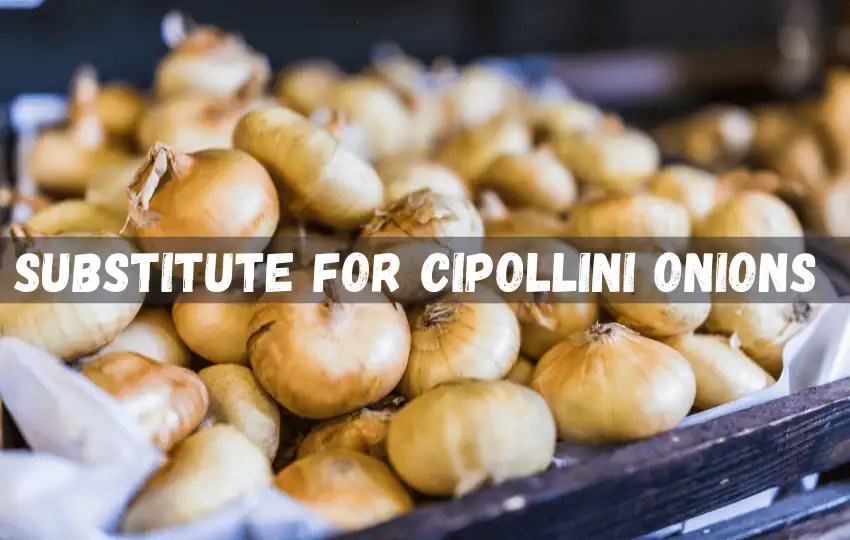Cipollini onions are small, flat, and sweet onions commonly used in Italian cuisine. These onions make a great addition to stews, roasts, and sauces, but they can be hard to find and expensive.
If you’re unable to find cipollini onions, you might be wondering what the best substitute is. Luckily, there are a variety of onions that make great alternatives to cipollini onions.
In this article, we’ll concern about ten of the best substitutes for cipollini onions with proper measurement ratios.
So, let’s get started!
In short, "What can I use instead of cipollini onions?" Shallots, Pearl Onions, Red Onions, White Onions, Scallions, Leeks, Pickled Onions, Vidalia Onions, Yellow Onions, and Sweet Onions.
What cipollini onions, and what do cipollini onions taste like?
Cipollini onion is a type of Italian onion known for its small and round shape. They have a surprisingly sweet flavor with a slight hint of bitterness, making them an excellent addition to many dishes.
Their thin skins make them effortless to peel and prepare for cooking, making them popular in Italian cuisine.
They go particularly well with heavier meats such as beef or lamb and can also be added to vegetable-based pasta dishes or salads for additional flavor.
How to use cipollini onions?
Cipollini onions are an Italian variety of onions and are known for their shape. They are round, small and about the size of a golf ball.
The flavor of cipollini onions is sweet and mild, making them ideal for adding a subtle flavor to dishes. onion
Cipollini onions can be used in a variety of dishes, from salads to soups to stews or gratins.
To prepare them, start by slicing off the ends with a sharp knife, then peel off the papery skin. For grilled or roasted preparations, cut into rounds and toss with oil before roasting in an oven at 350°F (175°C) until tender and golden brown.
Cipollini onions pair well with herbs such as rosemary or thyme, as well as other aromatic vegetables like garlic or shallots. When using them raw in salads, slice them thinly for maximum flavor depth.
When cooked slowly in a Dutch oven or soup pot with stock, sugar and fresh herbs like bay leaves or sage, cipollini onions become deeply rich and caramelized — perfect for adding texture and sweetness to winter soups and stews.
Best substitutes for cipollini onions with a ratio
1. Shallots
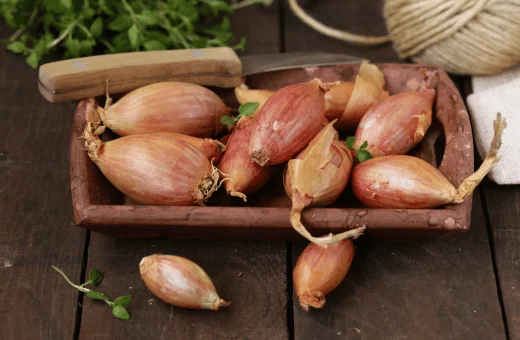
These small, mild-flavored onions have a subtle sweetness that is similar to the taste of cipollini onions.
They can be roasted, caramelized, or added raw to dishes for texture and flavor.
Moreover, Shallots are high in Vitamin C and dietary fiber, as well as other essential minerals like iron and potassium.
Ratio or measurement: Use two to three shallots per cipollini onion.
If the recipe requires a cup of chopped onions, use one and a half cups of chopped shallots.
2. Pearl Onions
These tiny onions are mild yet slightly sweet in flavor, making them an excellent substitute for cipollini onions.
They’re often used pickled or cooked in sauces and soups or roasted with other vegetables.
Pearl onions offer a good source of Vitamin C and dietary fiber, as well as manganese, iron and potassium.
Ratio or measurement: To replace one cipollini onion, use three to four pearl onions.
If the recipe requires a cup of chopped onions, use one and a half cups of chopped pearl onions.
3. Red Onions
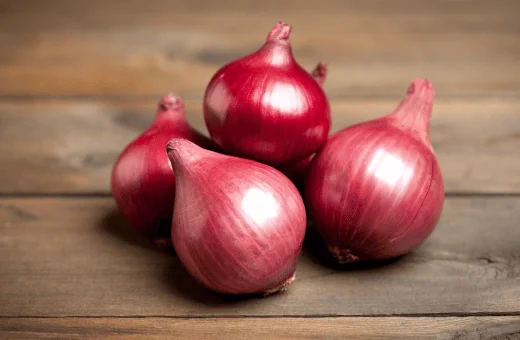
Red onions are larger than cipollini onions but have a similar sweet flavor that works great in many recipes.
They can be sliced into salads or sautéed for a flavorful side dish. Red onions provide Vitamin C, dietary fiber and other essential minerals like manganese and iron.
Ratio or measurement: To replace one cipollini onion, use half a small red onion.
If the recipe requires 1 cup of chopped onions, use one and a half cups of chopped red onions.
4. White Onions
White onions may not be as sweet as some varieties like red onion, but they still provide a mild flavor that complements many dishes when cooked or eaten raw.
They’re also high in Vitamin C and dietary fiber, providing essential nutrients for overall health maintenance.
5. Scallions

Scallions, also known as either green onions or spring onions, scallions have a milder flavor than most full-sized onion varieties, which makes them a suitable substitute for cipollini onions in certain recipes.
Ratio or measurement: To replace one cipollini onion, use two to three scallions.
If the recipe requires one cup of chopped onions, use one and a half cups of chopped scallions.
6. Leeks
Leeks contain a mild onion flavor and are often used in soups and stews. They make a great substitute for cipollini onions in recipes that require cooked onions.
Ratio or measurement: To replace one cipollini onion, use half a cup of chopped leeks.
If the recipe requires one cup of chopped onions, use one and a half cups of chopped leeks.
While leeks can be used whole in some recipes due to their slender shape when cut open vertically from top to bottom along their length.
7. Pickled Onions
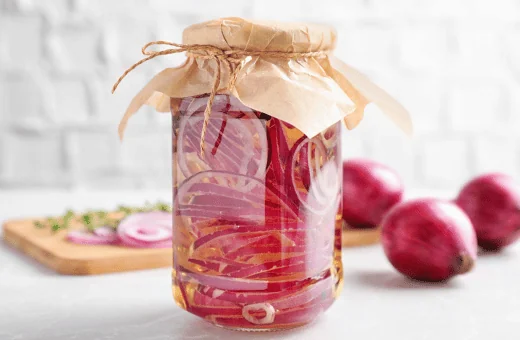
Pickled onions provide an intensely flavorful way to enjoy the benefits associated with eating cipollini onions without having to consume them fresh each time.
The process of pickling alters these vegetables’ subtle sweetness by adding ingredients such as vinegar, sugar, herbs & spices, which enhances their natural flavors, making them great accompaniments with main dishes.
8. Vidalia Onions
Vidalia onions are known for their sweet and mild flavor, making them an excellent substitute for cipollini onions.
Ratio or measurement: Use one and a half large Vidalia onions per cup of sliced or chopped onions.
9. Yellow Onions
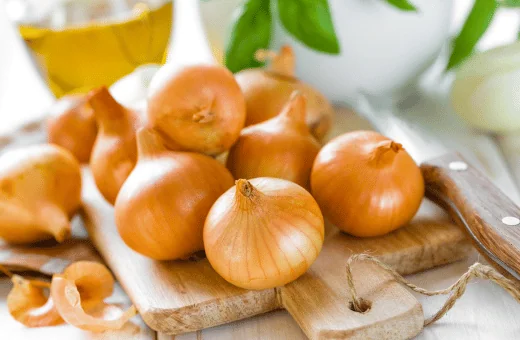
Yellow onions have a strong flavor, but if you’re unable to find any other onion substitutes, they can work as a substitute for cipollini onions.
Ratio or measurement: Use half a small yellow onion to replace one cipollini onion.
If the recipe requires one cup of chopped onions, use one and a half cups of chopped yellow onions.
10. Sweet onions
If you cannot find Cipollini onions, you can always substitute them with sweet onions. Sweet onions, like Walla Walla onions, have high sugar content and are mild and sweet in flavor.
They are the closest to Cipollini onions in terms of flavor.
Ratio or measurement: Use 1 to 2 TBSP of finely chopped sweet onions for 1 Cipollini onion.
Discover more: Best substitutes for green onions
What is the difference between pearl and cipollini onions?
The main difference between pearl and cipollini onions is their size and shape. Pearl onions are smaller, rounder, and more spherical than cipollini onions which are larger, flatter, and have a more oval-like shape.
Pearl onions also tend to be milder in flavor compared to cipollinis which can be quite pungent. Additionally, pearl onions have white skins, while cipollinis usually have red or yellow skins.
When it comes to cooking, pearl onions are more versatile as they can be eaten raw, boiled, roasted, grilled, and sautéed. Cipollinis.
On the other hand, they are usually best when slow-cooked or braised since their slightly tougher skins and firmer texture require longer cooking times.
Furthermore, pearl onions are commonly used in soups and stews, whereas cipollinis are often featured in salads or as a garnish for various dishes.
Overall, both pearl and cipollini onions offer unique flavor profiles that can enhance any dish.
While there is no one “right” choice between them – it simply comes down to personal preference – understanding the differences between these two types of onions can help you make the best decision for your culinary needs.
Conclusion on substitute for cipollini onions
Several substitutes can replace Cipollini onions in any recipe, and by following these ratios, you can make sure that the substitution won’t affect the flavor or texture of your dish.
Whether you choose yellow onions, shallots, red onions, pearl onions, leeks, scallions, or sweet onions, make sure that you pick the right amount to achieve the same results as Cipollini onions.
Go ahead and try these substitutions in your next recipe; you won’t be disappointed!
FAQs on substitute for cipollini onions
Q1. What is similar to cipollini onions?
Cipollini onions are similar to shallots and pearl onions in terms of taste, texture, and size. They also have a sweet flavor and the same crunchy texture. Other onion varieties that are comparable include ramp onions, scallions, leeks, chives and bohemian wax peppers.
Q2. Are cipollini onions like shallots?
Cipollini onions and shallots are both members of the allium family, but they differ in appearance, flavor, and culinary uses. Cipollini onions are round with a flat side, while shallots have a long, tapered shape. Cipollini onions have a much sweeter flavor than shallots, which have a milder flavor.
Additionally, cipollini onions are often used raw in salads or cooked in dishes like roasted vegetables due to their sweetness. Shallots are typically chopped up and cooked into sauces and dressings for added flavor.
Q3. Can you substitute cipollini onions for pearl onions?
Yes, you can substitute cipollini onions for pearl onions. Cipolline onions have a mild flavor and are similar in size to pearl onions, making them a great option for substitutions. However, the texture of cipollini onions is slightly firmer than that of pearl onions. Additionally, cipollini onions have a more golden color when cooked.
For recipes that call for pearl onions, cipollini can be used as a substitute if desired. Remember that the texture and flavor may vary slightly compared to traditional pearl onion dishes.
Q4. What can I use rather than pearl onions in beef bourguignon?
Beef bourguignon is a standard French dish that typically calls for pearl onions in the recipe. However, if you don’t have pearl onions on hand, there are several other ingredients that you can use as a substitute. One option is to use small cipollini onions instead of pearl onions.
These onions are slightly sweeter and more delicate than regular onions, making them an excellent substitution for beef bourguignon. You could also try using shallots, which have a mild garlic-like flavor and can give the dish an extra kick of flavor.
Another option is to use leeks instead of pearl onions, as they have a slightly mellower onion flavor that still works well with the other components of the dish. Finally, you could opt for baby potatoes or even diced carrots to add texture and sweetness to your beef bourguignon in place of pearl onions.
Q5. Can I substitute Cipollini onions for shallots?
Yes, you can substitute cipollini onions for shallots in most recipes. Cipollini onions, also known as Italian baby onions, have a sweet and mild flavor that is similar to shallots.
While they are much smaller than shallots, they can still provide a great depth of flavor when used in recipes. Cipollini onions also have higher sugar content, meaning they caramelize better when cooked and can provide more sweetness than shallots.
Q8. What are cipollini onions in Italian?
Cipollini onions are small, flattened onions that are native to Italy. They are also known as Borettana onions and come from the Italian region of Liguria. Cipollini onions have a sweet flavor and tender texture when cooked, which makes them a versatile ingredient in many Italian dishes.
In Italian, the name is derived from Cipolla, the word for onion in Italian. They are generally used in dishes such as pasta sauces, salads and soups or can be pickled or caramelized and served with meat or poultry dishes. Cipollini onions are often called “lilliput” (Lilliput) onions because they are a miniature version of the larger onion varieties. The skin of the cipollini is thin and papery and ranges in color from yellow to red-purple, depending on the variety.

